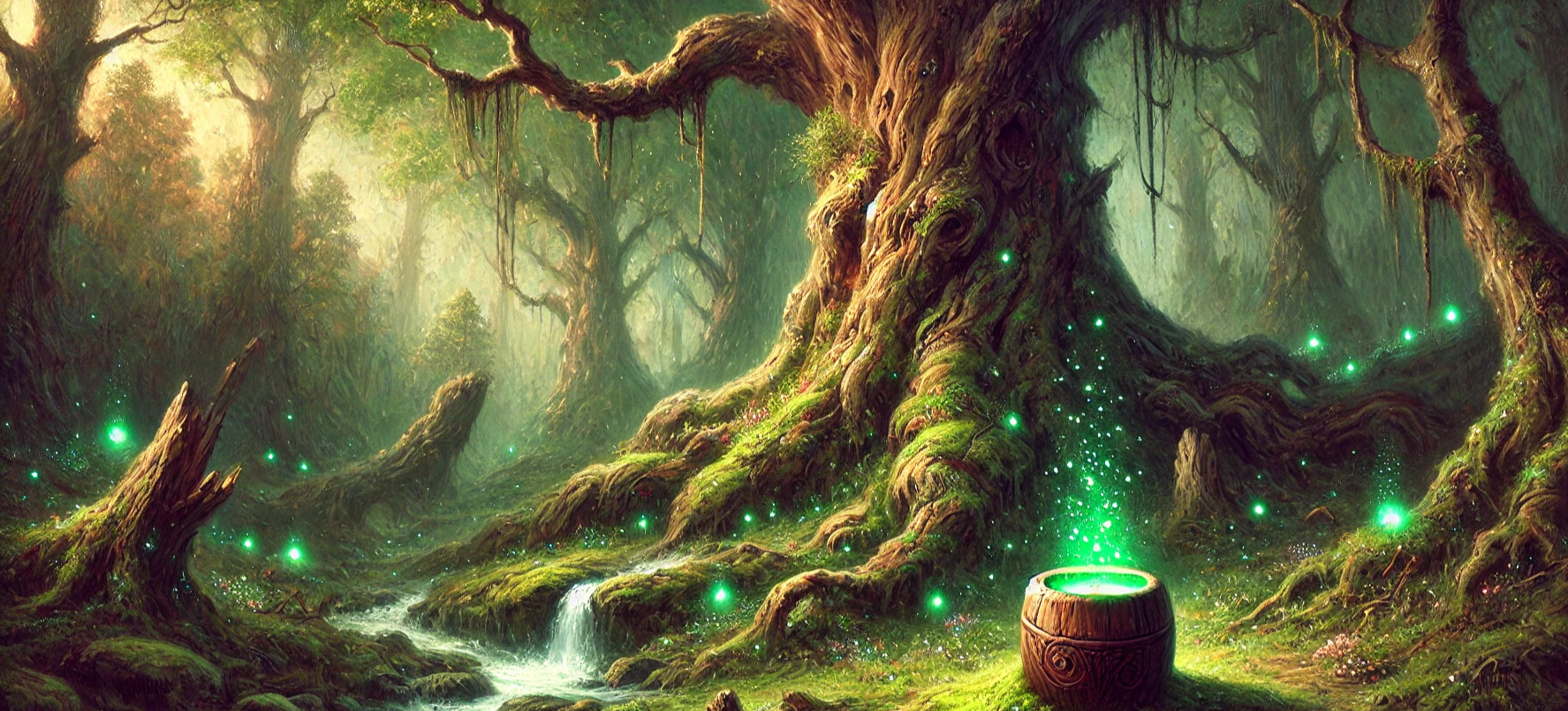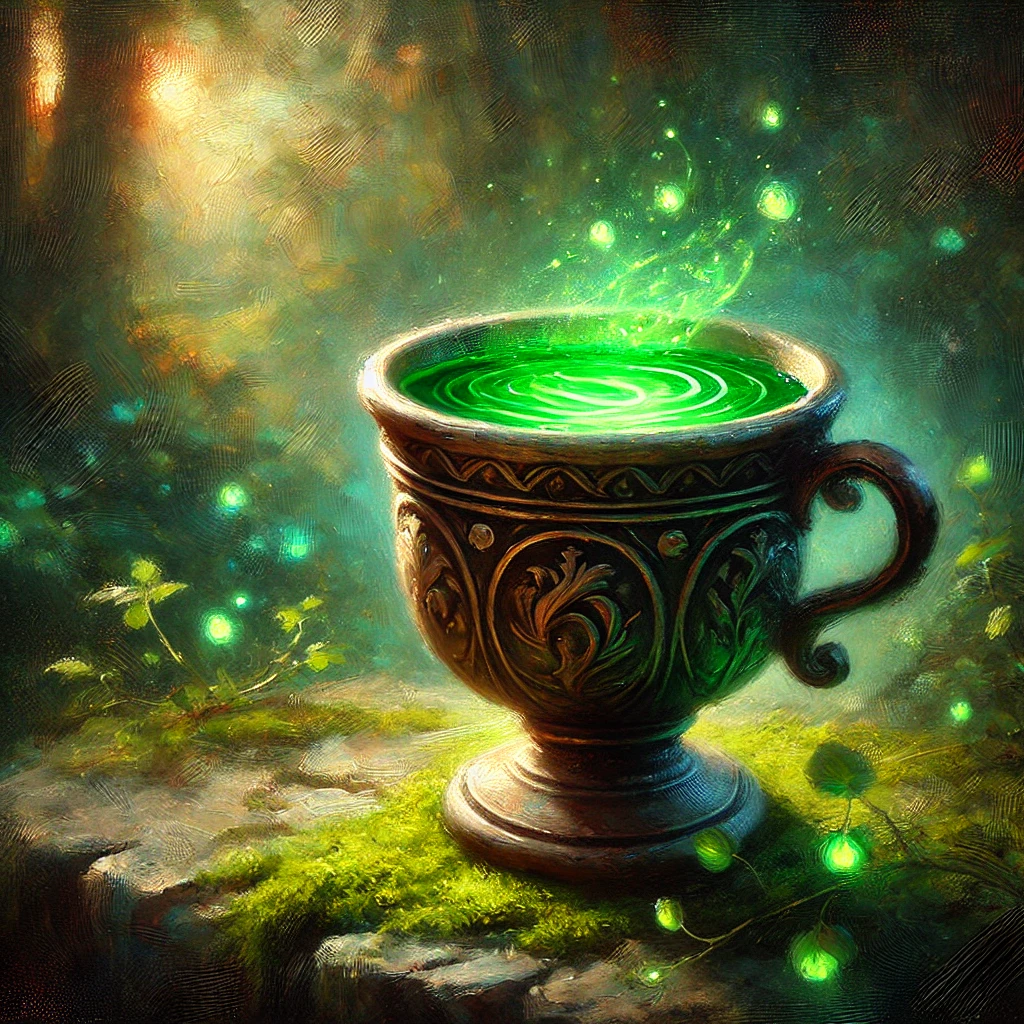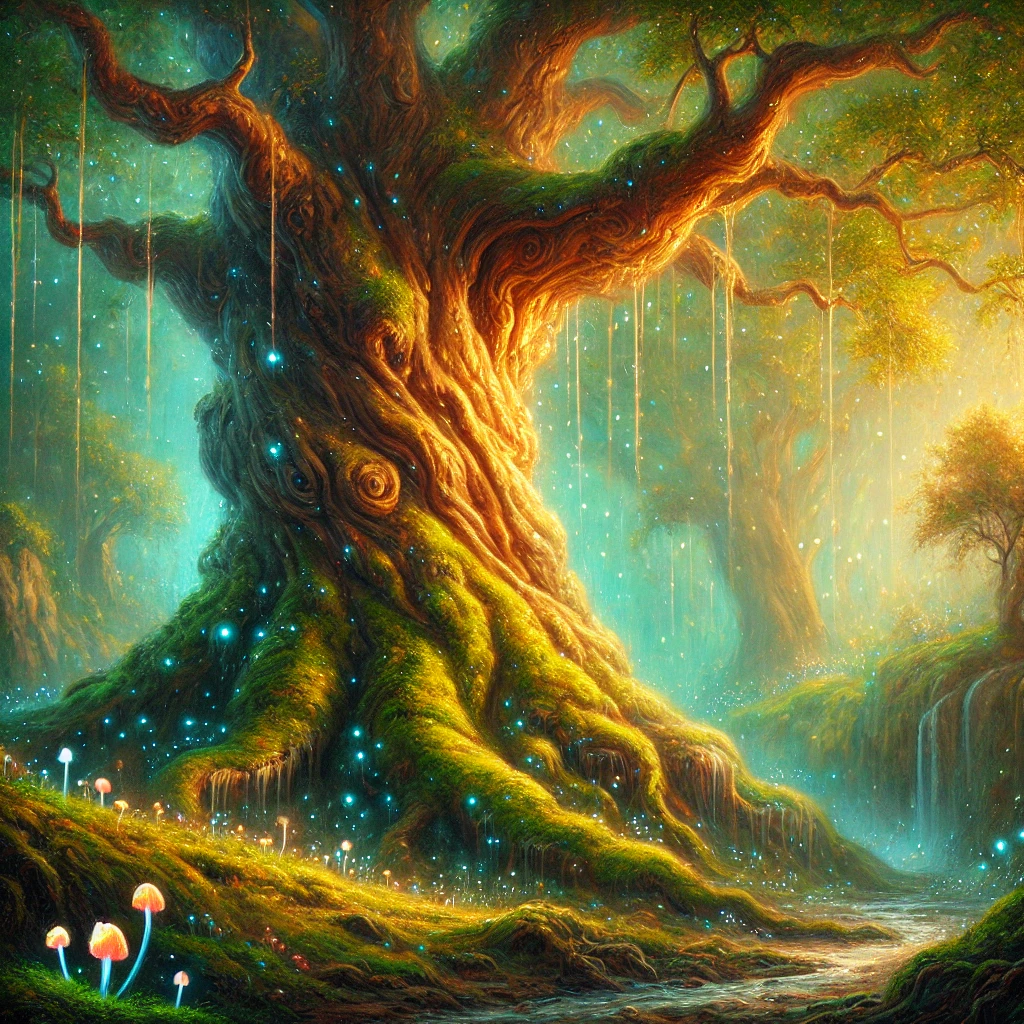Blood of the World-Root
Deep within the tangled heart of the Vyrewood, where wild magic runs feral and nothing stays the same for long, there is said to grow a tree unlike any other. Gnarled, massive, and veined with glowing sap, the World-Root is believed to be one of the first living beings born of Faethra's will—a seed of divine chaos buried in fertile madness. Its roots stretch through dimensions, time, and memory, anchoring a forest that defies nature itself.
The sap it bleeds, thick, luminous green, and unnaturally sweet, is known as the Blood of the World-Root.
Legend claims a single drop can cure any affliction, banish rot, purge curses, even mend broken souls. But nothing in Vyrewood is without price. Those who drink must contend with the forest's will, for the World-Root does not offer mercy. Some are changed—granted magic beyond their kind, fused with nature, or gifted second life. Others vanish, absorbed into root and bark, their essence feeding the tree that drank them in return.
Some say the tree remembers them all. Faces surface in its bark, ecstatic, tormented, serene. They whisper to travelers on the wind, calling them deeper. Whether this myth is a tale of healing or a caution against hubris depends on who's telling it... and whether they made it out.
Historical Basis
The first recorded mention of the Blood of the World-Root appears in a fragmented journal recovered from the ruins of a Veydralin temple-ship, wrecked off the coast of what is now Necai in year 61 HE. The text, written in an archaic form of High Eouman, describes a "grove of living madness" and a “root-veined god” whose sap cured the fever of a dying priestess—but bound her soul to the forest in return.
The passage is short and cryptic, barely a few sentences, but it’s the oldest surviving record with clear reference to the glowing green sap, divine price, and face-marked bark—key traits consistent with modern versions of the myth. Whether the account is firsthand, allegorical, or already a retelling of an older oral tradition is still debated by scholars. Some even believe the wreck was no accident, but the result of Vyrewood rejecting their theft.
More structured tales of the Blood emerge in Kalrosi oral history by 121 HE, especially among the Eláfi clans, who warn against trespassing too deep into the forest’s heart. Their version speaks of a scout who returned healed of a shattered spine, only to slowly turn to moss over the course of a season, vanishing into the roots during his tribe’s migration.
Spread
The myth of the Blood of the World-Root is not common knowledge, but it’s also not entirely obscure. It exists on the fringes of known history—half-believed by scholars, whispered by druids, and feared by those who've seen too much. In most of Tanaria, it sits somewhere between an arcane folktale and a cautionary legend.
In academic circles, particularly among the Aelvaren and the Order of Umbra, fragments of the myth are studied like riddles—curiosities tied to wild magic, divine punishment, or planar bleed. But even these scholars treat it as apocryphal, citing unreliable sources, dream-records, and secondhand accounts from mad explorers.
Among the Eláfi of Kalros, reclusive druids, and certain Fey-bound seers, however, the tale is considered deadly serious. They don’t just believe in the World-Root—they act as if it’s watching. Some clans mark maps with a blank space labeled simply “Do Not Drink.” Others keep vigil at the forest’s edge, warning travelers away, especially on nights when Callista and Umbriel both shine.
Rarely, the myth surfaces in song or oral tales—sailors tell of crews vanishing inland, adventurers claim to have seen “a bowl full of stars,” and a few warlocks swear their power came not from a pact but from a drink taken beneath living branches. These people are either gifted, twisted, or vanished within a year.
So, it's not pub gossip. But those who deal in magic, prophecy, or ancient power? They know the story—and they know to fear it.






Comments